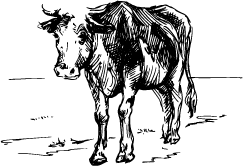Do You Have to Rdhydrate Dry Aged Beef
Dry-aged beef production also used to be referred to simply as "hanging meat". This is because after slaughtering the sides of beef are first allowed to dangle freely in the air, well chilled at temperatures of around freezing point. This allows liquid to escape and vital enzymes to quietly do their work. This produces a delicate, full-flavoured dry-aged meat that is very popular not just with steak connoisseurs.

But dry-aged beef production has two small drawbacks: It is time-consuming and entails a loss of volume of up to 30% – but not in the DRY AGER®. In this fridge, the pure weight loss resulting from liquid escaping after four weeks of aging on the bone is only around 7 to 8%, so more of the meat is retained. Before the DRY AGER® existed, the advent of vacuum machines and the higher weight loss during dry aging meant that many businesses opted to switch to wet aging in a bag. At the time, the method seemed to be more reliable, faster and still less expensive. As the slow-food movement has developed in the 21st century, this process has happily been rediscovered and championed again. Dry-aged beef is now even available to buy in the supermarket.
DRY AGED BEEF PRODUCTION
The butcher's trade in the modern age enjoys many better technical conditions. One of the major concerns for master-butchers back in history therefore no longer arises. If there were temperature fluctuations, this could cause rotting of the bone marrow which then spoiled the entire piece of meat. In today's high-tech industrial maturing chambers, constant temperatures of from one to three degrees Celsius must prevail. The humidity is also very precisely controlled. In addition, optimum ventilation is required. Under these conditions, the juicy beef is transformed when it is dried for between 21 and 42 days into tasty dry-aged beef. The hung meat forms a dark crust under which the soft muscular meat does its work. The crust is as black as black pudding and hard, and a white fuzz of harmless mould can even form over it. If the dry-aged meat is aged for long enough, the crust is separated from it. The meat juice evaporates and leaves behind a delicately tender, dark meat with the typical flavours of nut and butter that make the hearts of true connoisseurs beat a little faster.
THE MOST POPULAR
DRY AGED BEEF RACES
STEP I
MATRURING FRIDGE
OR BAG?

A maturing fridge such as the DRY AGER® from Landig is a worthwhile investment and delivers an unrivalled result. But if you just want to test what dry-aged beef tastes like in a private capacity, you should use the dry-aged maturing bag from Lava. In terms of flavour, this special membrane dry-aging bag also has plenty to offer. The major advantage of the maturing fridge remains its capacity. Entire loins of beef can be hung by the bone, and this enhances the flavour. The bag is only suitable for cuts, and it is also important to know that in the maturing bag the lack of a fat layer and the bone side means that there is no protective outer layer and therefore unfortunately there can be weight losses of more than 30% – so it is very evident that with larger quantities the DRY AGER® will pay for itself after just a few full loads.
STEP II
A GOOD START

The best foundation for dry-aged meat is ideally supplied by a butcher you can trust. For around 15 euros per kilo, you can get an excellent loin of meat. You can then choose your own favourite cut, from a T-bone to a fillet. But there are also trustworthy and quality-approved suppliers online. Whatever option you choose, the essential thing is always to maintain an unbroken cold chain – and ensure maximum cleanliness during processing. Gloves, a hairnet and a face mask are just as essential as clean, sharp cutting tools.
STEP III
THE RIGHT TIME

Whether you prefer rib-eye, roast beef or a fillet steak is a matter of taste. What matters is that you age the meat for the right length of time. A tender piece of sirloin requires just about a week, and a piece on the bone can easily remain in the maturing fridge for four weeks. With the dry-aged maturing bag, an aging period of 21 days generally should not be exceeded.
STEP IV
THE TEST OF MATURITY

When the meat has a dark crust and smells slightly of yeast and ham, it is mature. The dark crust is cut off and can no longer be used. A mature dry-aged meat is apparent from the reddish-brown colour below the crust and the firmness of the meat. If you press a finger on the dry-aged beef, a depression ought to be left behind.
DRY AGED BEEF BURGER WITH
BACON, SALAD & POMMES
For 4 people:
750 grams of beef steat, 1 egg yolk, 2 shallots, pepper, Fleur de Sel, 1 pack of french fries, 1
Cucumber, 100 grams of small tomatoes, ½ head salad, some ketchup / cocktail sauce, 4 burger rolls, a little olive oil for roasting, 4 slices of mountain cheese
Preparation:
1. Mix the beef steat with the egg yolk.
2. Cut shallots very finely and with the Tatar mix.
3. Peppers, salt.
4. To form 4 equal-sized burgers.
5. Heat pan, fry the burgers medium.
6. Slice the bread roll.
7. Fry the bacon.
8. Burger rolls provided with burger patties.
9. Place the cheese and melt in the oven.
10. Add some cocktail sauce to the burger.
11. Add bacon and rolls.
12. prepare french fries according to pack instructions
13. Garnish with head salad.
14. Mix the cucumber slices with other salad, sliced tomatoes,
15. Do everything on plates and enjoy!
Source: https://www.dry-ager.com/en/dry-aged-beef/
0 Response to "Do You Have to Rdhydrate Dry Aged Beef"
Post a Comment